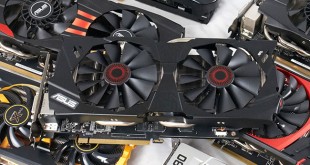
In the second of our GTX970 launch articles today, we look at the new ASUS version of the card – the GTX970 STRIX OC. As the name would suggest it ships in an overclocked state with a proprietary cooling system and a hybrid fan system to drop noise levels to a minimum.
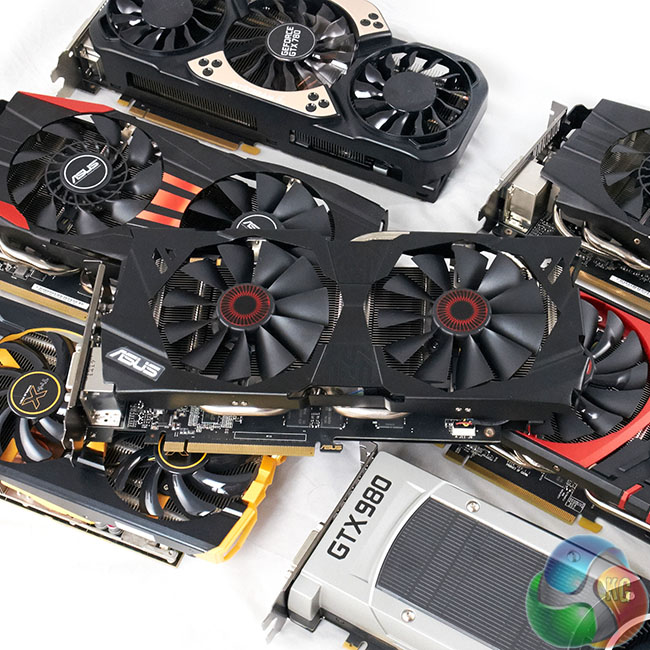
The Asus GTX970 Strix OC is a mean looking card – the artwork is intentionally minimalistic, fitting in with the theme. Asus say the name STRIX is taken from the ancient Roman and Greek for the word ‘OWL'. Bird lovers all over the world will be happy.
Even though we have a handful of reviews ready for the launch today, Nvidia's Maxwell architecture deserves a little discussion before we get into testing the ASUS GTX970. If you are a regular reader of KitGuru then you will already have studied our multiple analysis of the lower level GTX750Ti solution throughout the year.
The GTX750ti has been one of the most exciting cards that Nvidia have released in recent years – performance is close to the HD7850 while consuming half the power at the socket – and all without the need for a PCIe power cable. It produces such a modest heat emission that the Asus GTX750Ti Strix OC we reviewed recently didn't need to spin the fans most of the time, even when gaming.
AMD really are so far behind now when it comes to power consumption that they will need to release a new architecture to compete. Not an easy thing to do overnight, but we hope they have something in the pipeline to become competitive again in the coming months.
The Maxwell architecture has been designed to deliver twice the performance per watt of previous generation Geforce hardware. It sounds easy enough on paper, but the real world challenges for Nvidia have been complex.
| GPU | GeForce GTX 680 (Kepler) | GeForce GTX 980 (Maxwell) | Geforce GTX 970 (Maxwell) |
| Streaming Multiprocessors | 8 | 16 | 13 |
| CUDA Cores | 1536 | 2048 | 1664 |
| Base Clock | 1006 mhz | 1126 mhz | 1050 mhz |
| GPU Boost Clock | 1058 mhz | 1216 mhz | 1178 mhz |
| Total Video memory | 2GB | 4GB | 4GB |
| Texel fill-rate | 129 Gigatexels/Sec | 144.1 Gigatexels/Sec | 109.2 Gigatexels/Sec |
| Memory Clock | 6000 mhz | 7000 mhz | 7000 mhz |
| Memory Bandwidth | 192 GB/sec | 224 GB/sec | 224 GB/s |
| ROPs | 32 | 64 | 64 |
| Manufacturing Process | 28nm | 28nm | 28nm |
| TDP | 195 watts | 165 watts | 145 watts |
The new GM204 GPU is very efficient. The Maxwell SM has been rebalanced so that the CUDA cores are fully utilised more often. Doing so saves power and enhances overall performance. The L2 cache size in the GM204 is 2MB, or four times larger than the GK104. The addition of extra cache means that fewer requests to the GPU memory are needed – again reducing power consumption and pushing more performance.
The Geforce GTX 970 is equipped with 7Gbps memory. Those of you with higher resolution monitors, or running in a multi screen configuration will also be pleased to hear that there is 4GB of GDDR5 memory on the card, not 3GB – this memory will push 224 GB/s sec. Nvidia have added a new compression engine to reduce the demand on DRAM bandwidth.
The Asus GTX970 Strix OC has received a core clock enhancement to 1,114mhz, from 1,050mhz on the reference design. The GDDR5 memory remains untouched, as we would expect – its certainly not going to be a bottleneck.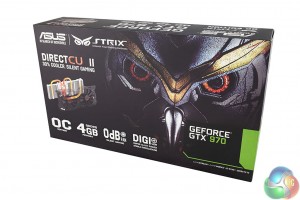
The robotic STRIX Owl makes an appearance on the front of the box. I think its actually very cool looking artwork – but also a little corny.
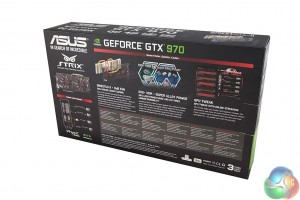
Asus list details of the cooler and software on the back of the box. Along with some images.
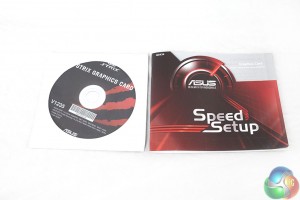
Not much of an accessory bundle, just a software disc and some literature on the product. Always best getting the latest drivers from the Nvidia website.
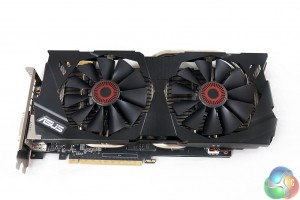
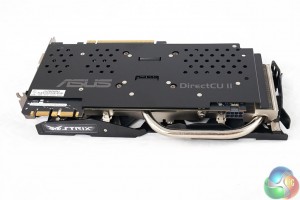
The Asus GTX970 Strix OC is a dark, ominous looking card. It ships with a backplate in place, which is certainly a welcome addition. There is a hefty heatpipe which protrudes a little from the top, as shown above.
Asus use a DIGI+ VRM with 6 phase Super Alloy Power with 30% less power noise and buzz free operation.
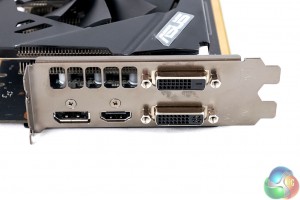
The Asus GTX970 Strix OC has two DVI connectors on the back (DVI-D and DVI-I), and a full sized HDMI 2.0 and DisplayPort. This HDMI port will handle 4K resolutions at up to 60hz.
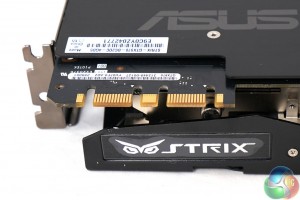
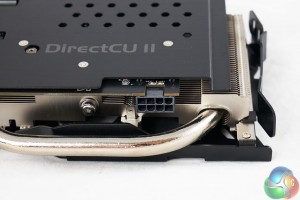
The card is SLi capable, and takes power from a single eight pin power connector. The MSI GTX970 Gaming 4G that we reviewed today uses an eight pin and a six pin connector which we we would think would be to improve stability under overclocked situations.
In the real world however both cards achieved very similar overclocked speeds – so the ASUS single 8 pin implementation seems more efficient to us. The less connectors needed, the better.
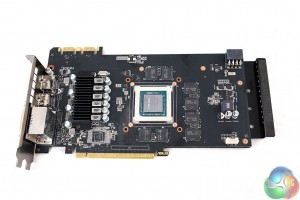
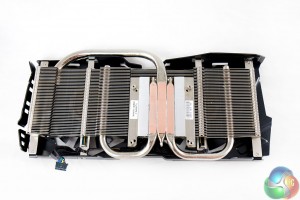
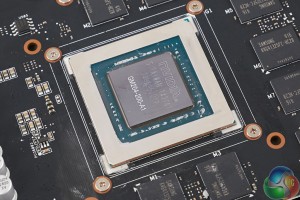
The Asus Direct CU II cooling system uses direct touch technology. Three thick 10mm heatpipes run into the copper base and into two racks of aluminum fins on either side of the core area.
Asus use Super Allow Capacitors, Super Alloy Chokes and Super Alloy MOS to help improve OC capability.
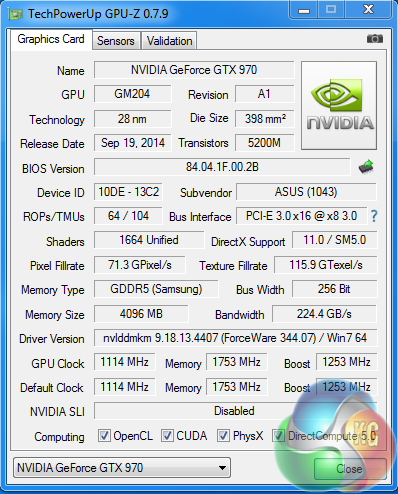
Special thanks to Mike over at Techpowerup for sending me over the latest beta version of GPUZ to fully support the Geforce GTX980. I felt like I was living in an episode of Back To The Future seeing a ‘release date’ of 19th September, when I started working on this review around the 13th.
The GM204 GPU is manufactured on the 28nm process. There are 64 ROPS, 104 Texture units and 1,664 CUDA Cores. The ASUS GTX970 Strix OC core speed is set at 1,1140mhz with a turbo boost to 1,253mhz. The 4GB of GDDR5 memory is clocked at 1,753mhz (7Gbps effective).On this page we present some high resolution images of the product taken with a Fuji XT1 and a Sigma SD1 camera. These will take much longer to open due to the dimensions, especially on slower connections. If you use these pictures on another site or publication, please credit Kitguru.net as the owner/source.
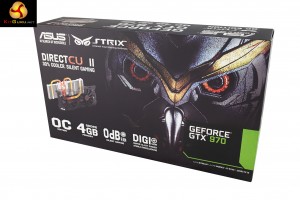
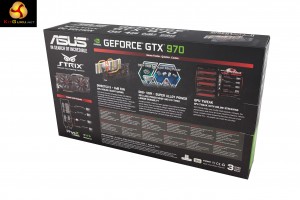
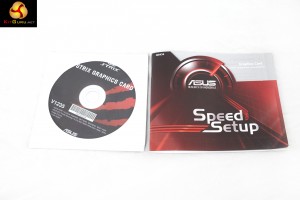
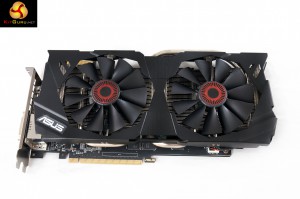
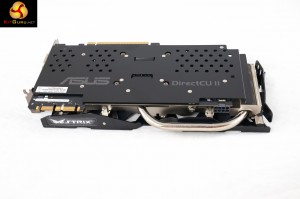
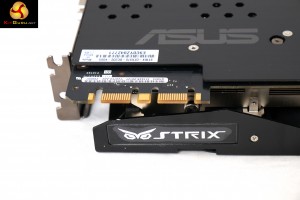
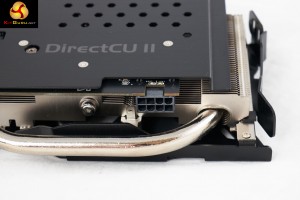
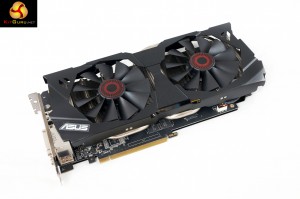
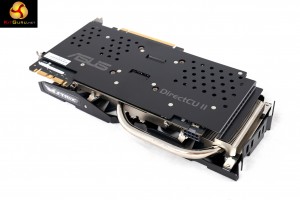
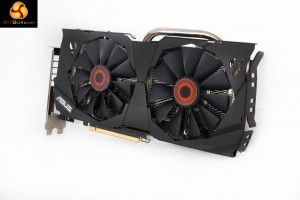
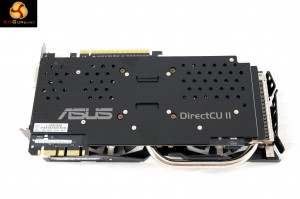
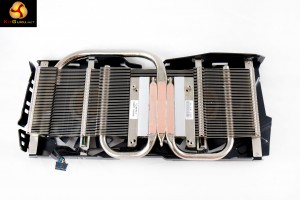
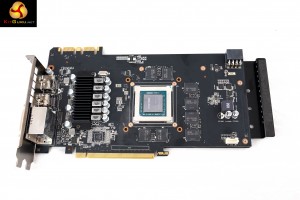
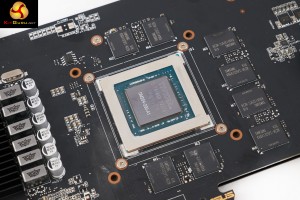
For the review today we are using the latest Nvidia Forceware 344.07 and AMD Catalyst 14.7 beta drivers. All of the AMD and Nvidia hardware in our reviews today used these drivers – tested this week before launch.
We are using one of our brand new test rigs supplied by DINOPC and built to our specifications. If you want to read more about this, or are interested in buying the same Kitguru Test Rig, check out our article with links on this page. We are using an Asus PB287Q 4k and Apple 30 inch Cinema HD monitor for this review today.
Comparison cards:
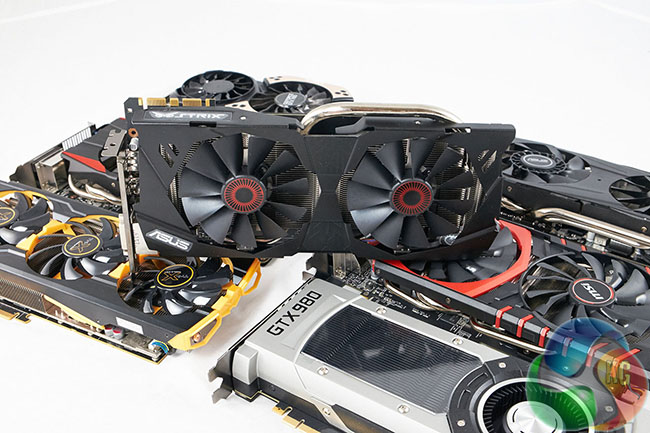
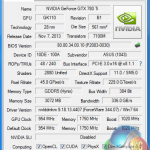
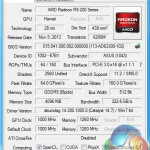
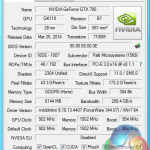
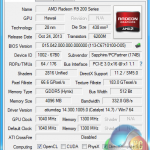
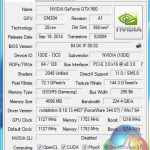
Asus GTX780 Ti Direct CU II OC (954mhz core / 1750 mhz memory)
Sapphire R9 290X Tri-X OC (1040 mhz core / 1300 mhz memory)
Nvidia GTX980 (1127 mhz core / 1753 mhz memory)
Palit GTX780 6GB (902 mhz core / 1502mhz memory)
Asus R9 290 Direct CU II OC (1000 mhz core / 1260 mhz memory)
Software:
Windows 7 Enterprise 64 bit
Unigine Heaven Benchmark
Unigine Valley Benchmark
3DMark Vantage
3DMark 11
3DMark
Fraps Professional
Steam Client
FurMark
Games:
Grid AutoSport
Tomb Raider
Metro Last Light Redux
Thief 2014
All the latest BIOS updates and drivers are used during testing. We perform generally under real world conditions, meaning KitGuru tests games across five closely matched runs and then average out the results to get an accurate median figure. If we use scripted benchmarks, they are mentioned on the relevant page.
Game descriptions edited with courtesy from Wikipedia.
Futuremark released 3DMark Vantage, on April 28, 2008. It is a benchmark based upon DirectX 10, and therefore will only run under Windows Vista (Service Pack 1 is stated as a requirement) and Windows 7. This is the first edition where the feature-restricted, free of charge version could not be used any number of times. 1280×1024 resolution was used with performance settings.
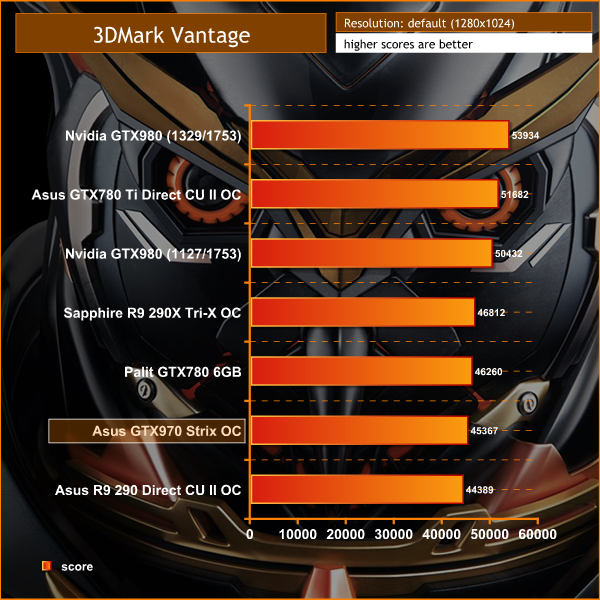
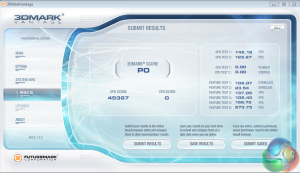
The Asus GTX970 Strix OC scores well, 1,000 points above the Asus R9 290 Direct CU II OC.
3DMark 11 is designed for testing DirectX 11 hardware running on Windows 7 and Windows Vista the benchmark includes six all new benchmark tests that make extensive use of all the new features in DirectX 11 including tessellation, compute shaders and multi-threading. After running the tests 3DMark gives your system a score with larger numbers indicating better performance. Trusted by gamers worldwide to give accurate and unbiased results, 3DMark 11 is the best way to test DirectX 11 under game-like loads.
If you want to learn more about this benchmark, or to buy it yourself, head over to this page.
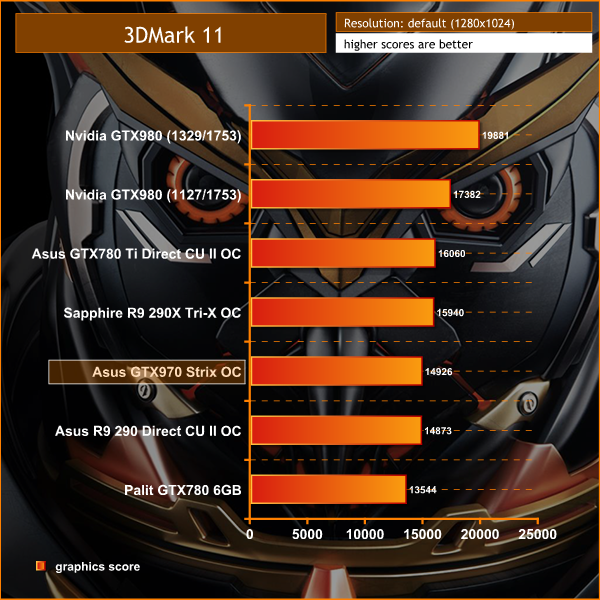
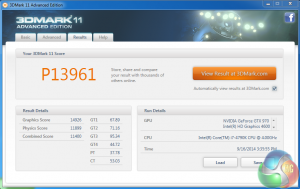
The Asus GTX970 Strix OC outperforms the Asus R9 290 Direct CU II OC and Palit GTX780 6GB, scoring 14,926 points in the graphics test.
3DMark is an essential tool used by millions of gamers, hundreds of hardware review sites and many of the world’s leading manufacturers to measure PC gaming performance.
Futuremark say “Use it to test your PC’s limits and measure the impact of overclocking and tweaking your system. Search our massive results database and see how your PC compares or just admire the graphics and wonder why all PC games don’t look this good.
To get more out of your PC, put 3DMark in your PC.”
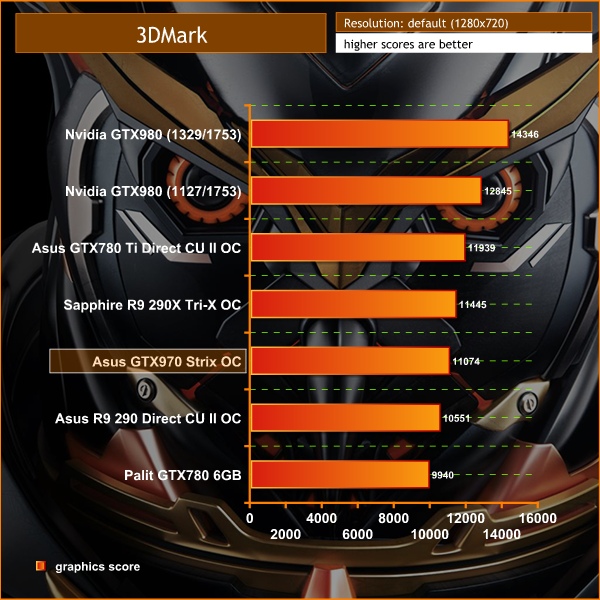
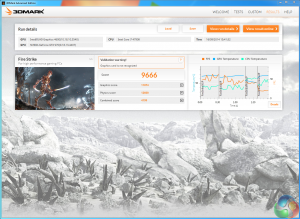
The Asus GTX970 Strix OC is closely matched to the Sapphire R9 290X Tri-X OC, falling in a couple of hundred points behind.
Unigine provides an interesting way to test hardware. It can be easily adapted to various projects due to its elaborated software design and flexible toolset.
A lot of their customers claim that they have never seen such extremely-effective code, which is so easy to understand.
Heaven Benchmark is a DirectX 11 GPU benchmark based on advanced Unigine engine from Unigine Corp. It reveals the enchanting magic of floating islands with a tiny village hidden in the cloudy skies. Interactive mode provides emerging experience of exploring the intricate world of steampunk.
Efficient and well-architected framework makes Unigine highly scalable:
- Multiple API (DirectX 9 / DirectX 10 / DirectX 11 / OpenGL) render
- Cross-platform: MS Windows (XP, Vista, Windows 7) / Linux
- Full support of 32bit and 64bit systems
- Multicore CPU support
- Little / big endian support (ready for game consoles)
- Powerful C++ API
- Comprehensive performance profiling system
- Flexible XML-based data structures

We set Quality to ‘High', Tessellation to ‘Normal' and resolution to 1600p.
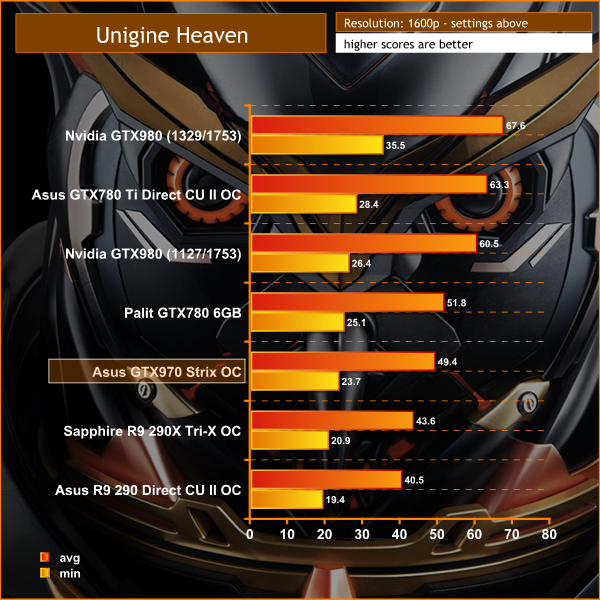

A fantastic result, averaging almost 50 frames per second, way ahead of the Sapphire R9 290X Tri-X OC Edition.
Valley Benchmark is a new GPU stress-testing tool from the developers of the very popular and highly acclaimed Heaven Benchmark. The forest-covered valley surrounded by vast mountains amazes with its scale from a bird’s-eye view and is extremely detailed down to every leaf and flower petal. This non-synthetic benchmark powered by the state-of-the art UNIGINE Engine showcases a comprehensive set of cutting-edge graphics technologies with a dynamic environment and fully interactive modes available to the end user.

We toggle quality to HIGH, and resolution to 1600p.
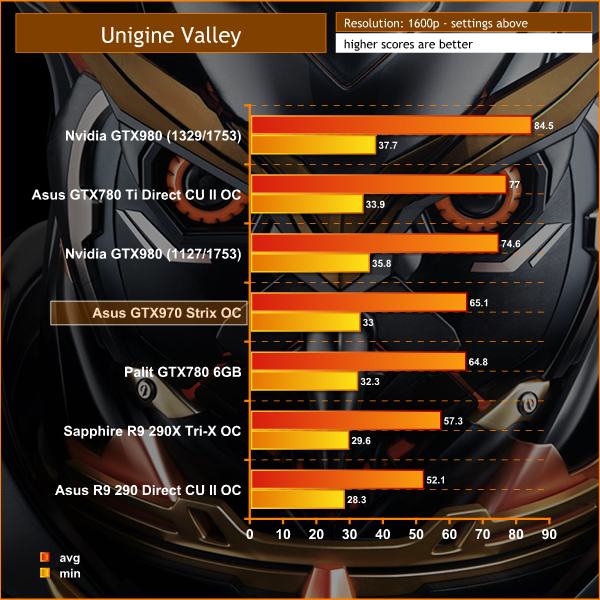

The Asus GTX970 Strix OC outscores the Palit GTX780 6GB at 1600p, averaging just over 65 frames per second.
Grid Autosport (styled as GRID Autosport) is a racing video game by Codemasters and is the sequel to 2008′s Race Driver: Grid and 2013′s Grid 2. The game was released for Microsoft Windows, PlayStation 3 and Xbox 360 on June 24, 2014. (Wikipedia).



On this page we test at 1080p and 1600p using the ‘Ultra' image quality profile with 8x MSAA.
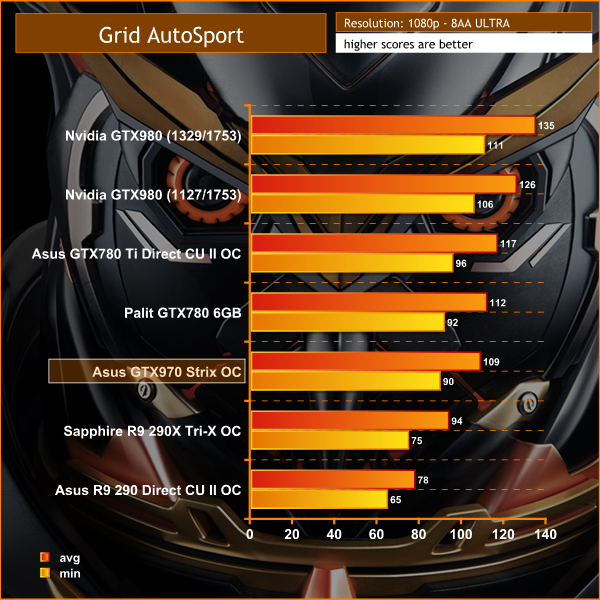
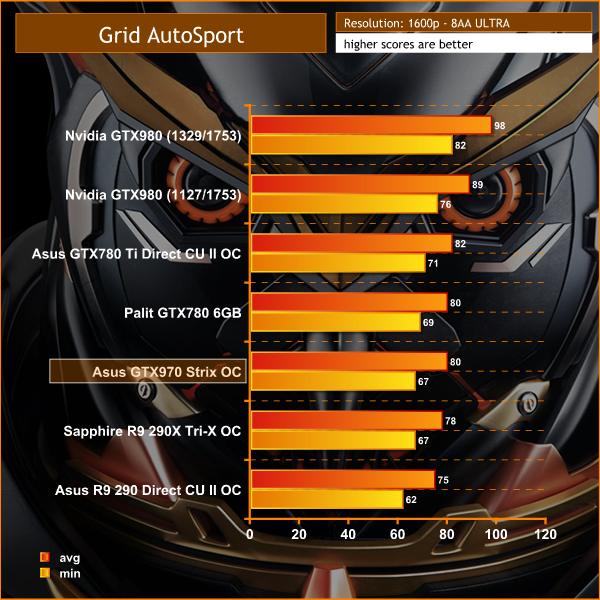
The Asus GTX970 Strix OC outperforms the Sapphire R9 290X Tri-X OC at both 1080p and 1600p. A remarkable result considering the pricing.
Grid Autosport (styled as GRID Autosport) is a racing video game by Codemasters and is the sequel to 2008′s Race Driver: Grid and 2013′s Grid 2. The game was released for Microsoft Windows, PlayStation 3 and Xbox 360 on June 24, 2014. (Wikipedia).
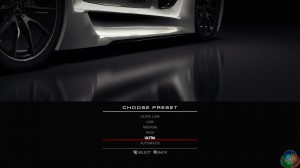
We test at Ultra HD 4k with 8MSAA. The Ultra Profile is selected for maximum image quality.
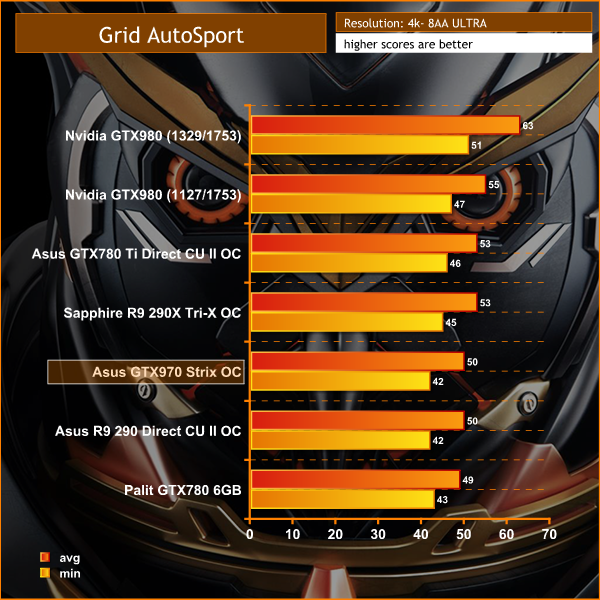
The Sapphire R9 290X Tri-X OC and Asus GTX970 Strix OC trade places at 4K resolution.
Thief is set in a dark fantasy world inspired by Victorian, gothic, and steampunk aesthetics. Garrett, a master thief who has been away from his hometown for a long time, returns to it, a place known only as The City, and finds it ruled with an iron grip by a tyrant called The Baron. While The City is ravaged by a plague, the rich continue to live in isolation and good fortune while the poor are forming numerous mobs against the authorities, Garrett intends to use the volatile situation to his favor. (Wikipedia).
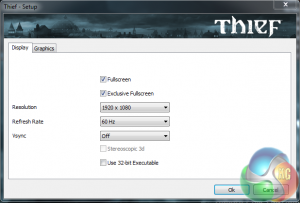
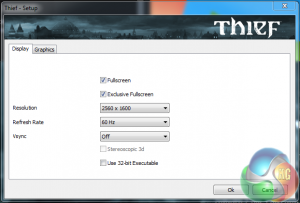
We test with the ‘very high' image quality preset at 1080p and 1600p.
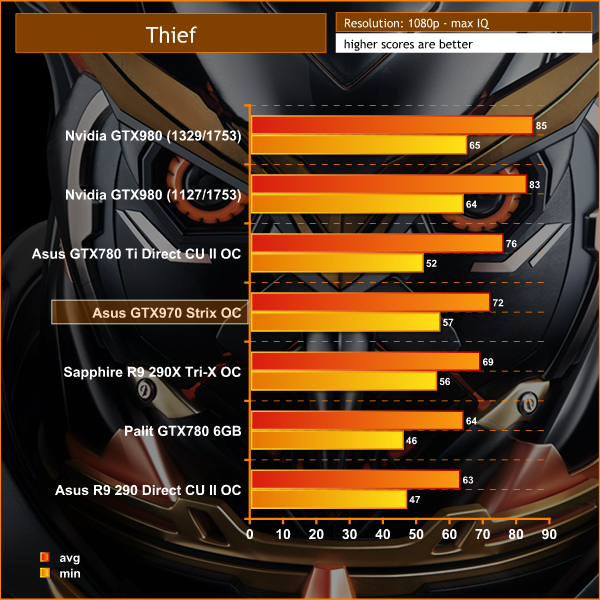
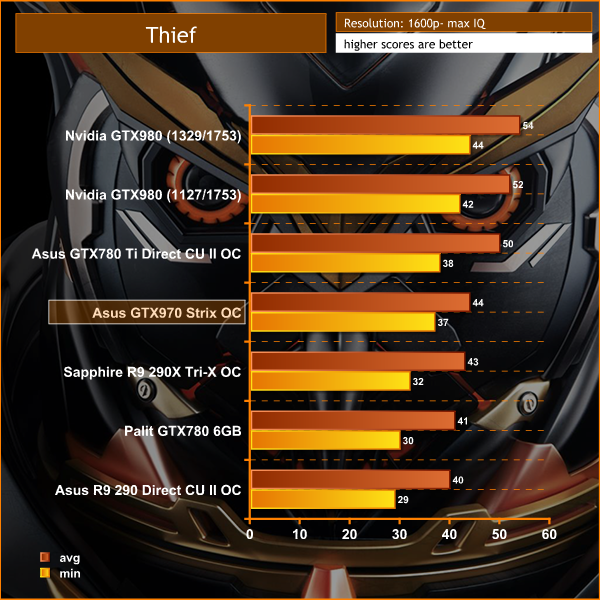
Thief runs well on the latest Nvidia hardware. We can see the Asus GTX970 Strix OC holds a slight performance benefit over the R9 290X Tri-X OC at 1080p and 1600p.
Thief is set in a dark fantasy world inspired by Victorian, gothic, and steampunk aesthetics. Garrett, a master thief who has been away from his hometown for a long time, returns to it, a place known only as The City, and finds it ruled with an iron grip by a tyrant called The Baron. While The City is ravaged by a plague, the rich continue to live in isolation and good fortune while the poor are forming numerous mobs against the authorities, Garrett intends to use the volatile situation to his favor. (Wikipedia).
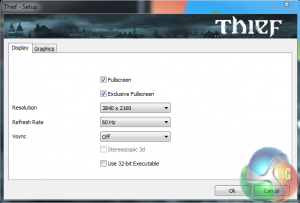
We test at the ‘very high' preset for maximum image quality. Resolution is set to 4k for this particular test.
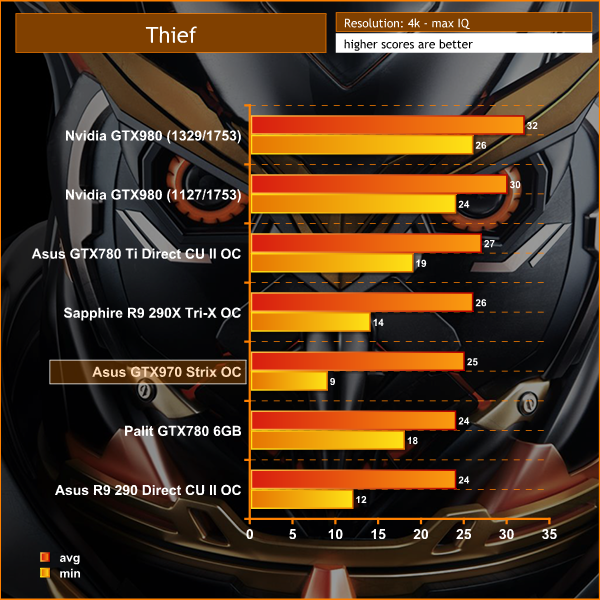
The Asus GTX970 StriX OC struggles at 4K resolutions to power Thief (at high image quality settings anyway), although apart from the GTX980, all the other cards do as well.
Tomb Raider received much acclaim from critics, who praised the graphics, the gameplay and Camilla Luddington’s performance as Lara with many critics agreeing that the game is a solid and much needed reboot of the franchise. Much criticism went to the addition of the multiplayer which many felt was unnecessary. Tomb Raider went on to sell one million copies in forty-eight hours of its release, and has sold 3.4 million copies worldwide so far. (Wikipedia).
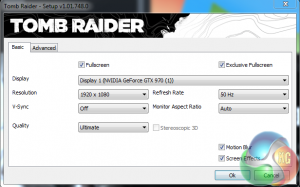
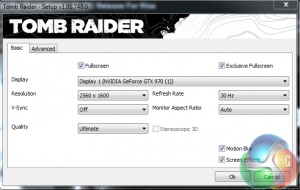
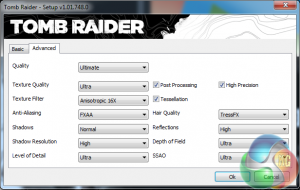
We test with the ‘ultimate' image quality profile at 1080p and 1600p.
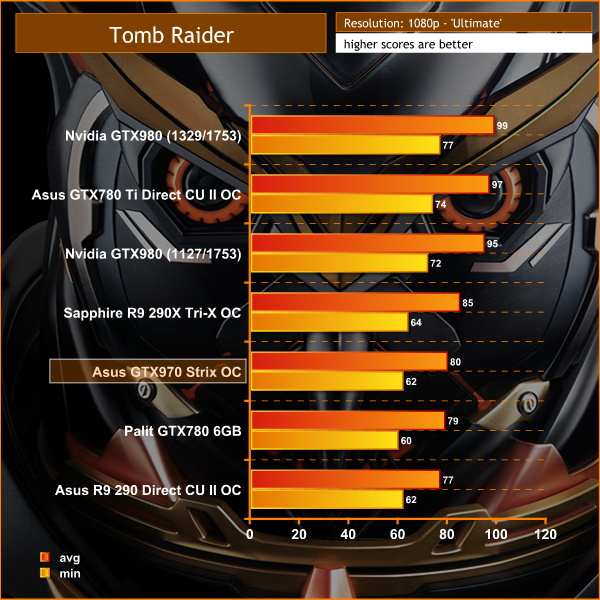
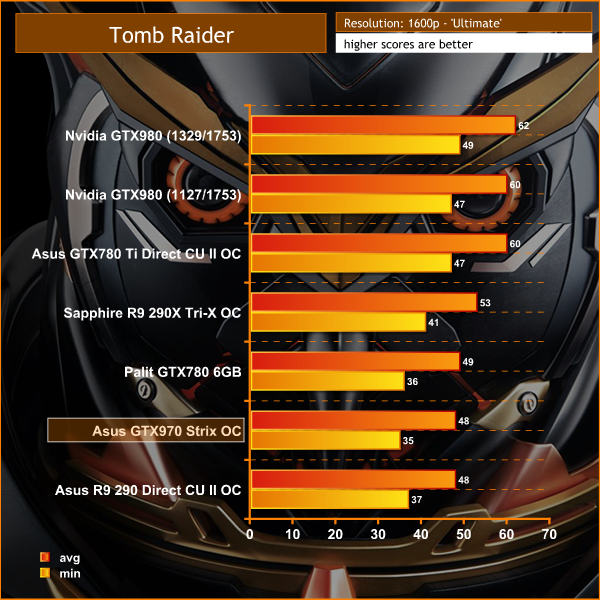
The Asus GTX970 Strix OC manages to maintain playable frame rates at both resolutions, holding well above 30 frames per second at all times, even at 1600p.
Tomb Raider received much acclaim from critics, who praised the graphics, the gameplay and Camilla Luddington’s performance as Lara with many critics agreeing that the game is a solid and much needed reboot of the franchise. Much criticism went to the addition of the multiplayer which many felt was unnecessary. Tomb Raider went on to sell one million copies in forty-eight hours of its release, and has sold 3.4 million copies worldwide so far. (Wikipedia).
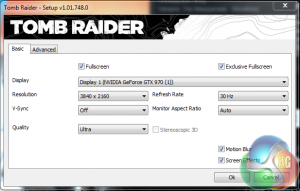
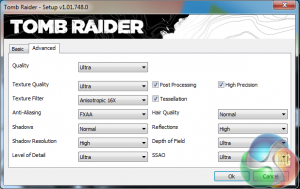
We test at Ultra HD 4k resolution with the ‘Ultra' image profile enabled. Single GPU solutions find the ‘Ultimate' image quality preset too difficult to power properly.
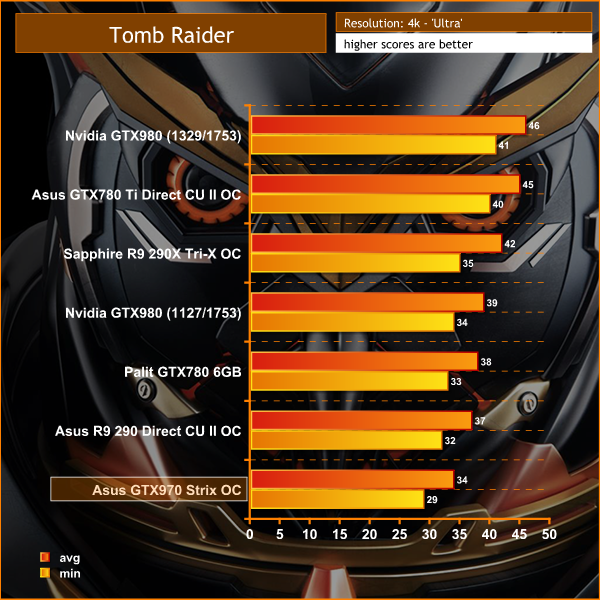
We drop the image quality a little at 4k resolutions to help maintain smooth frame rates. The Strix OC card maintains a playable experience holding close to 30 frames per second at all times.
On May 22, 2014, a Redux version of Metro Last Light was announced. It was released on August 26, 2014 in North America and August 29, 2014 in Europe for the PC, PlayStation 4 and Xbox One. Redux adds all the DLC and graphical improvements. A compilation package, titled Metro Redux, was released at the same time which includes Last Light and 2033. (Wikipedia).
We test with following settings: Quality-Very High, SSAA-off, Texture Filtering-16x, Motion Blur-Normal, Tessellation-Normal, Advanced Physx-On.
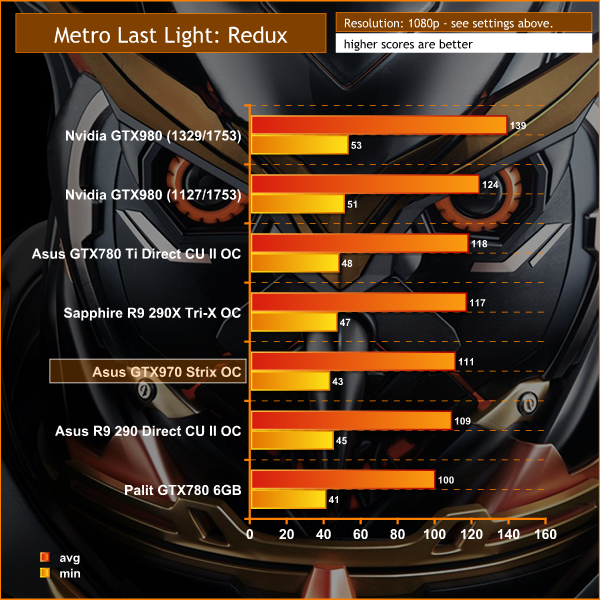
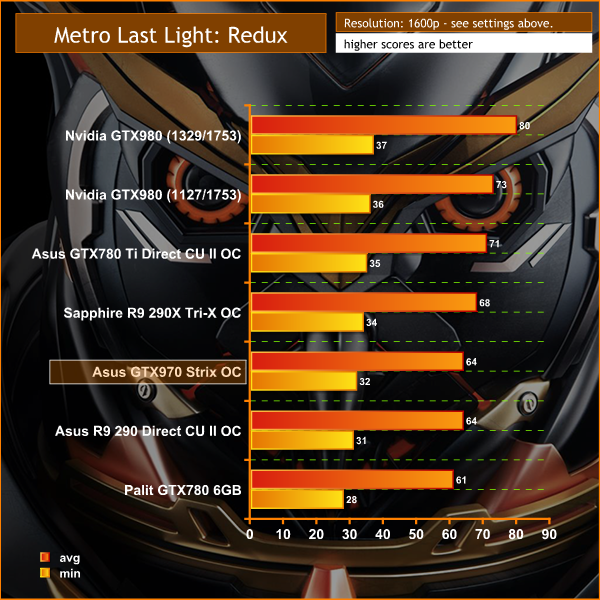
A demanding engine especially at 1600p. Still no problems powering the engine, and holding frame rates above 30 at all times. Silky smooth.On May 22, 2014, a Redux version of Metro Last Light was announced. It was released on August 26, 2014 in North America and August 29, 2014 in Europe for the PC, PlayStation 4 and Xbox One. Redux adds all the DLC and graphical improvements. A compilation package, titled Metro Redux, was released at the same time which includes Last Light and 2033. (Wikipedia).
We test with following settings: Quality-High, SSAA-off, Texture Filtering-16x, Motion Blur-off, Tessellation-Normal, Advanced Physx-off.
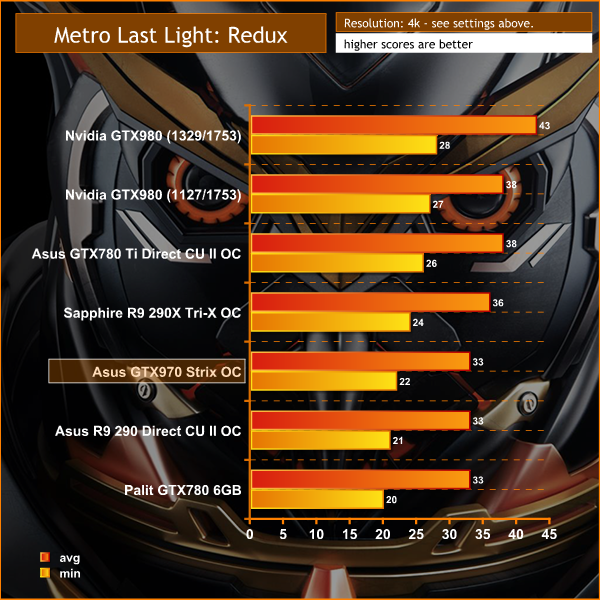
At 4k resolutions, the Asus GTX970 Strix OC struggles to hold smooth frame rates, dropping to 22 in a couple of the environments. That said, overall performance isn't too bad considering.The tests were performed in a controlled air conditioned room with temperatures maintained at a constant 23c – a comfortable environment for the majority of people reading this.Idle temperatures were measured after sitting at the desktop for 30 minutes. Load measurements were acquired by playing Crysis Warhead for 30 minutes and measuring the peak temperature. We also have included Furmark results, recording maximum temperatures throughout a 30 minute stress test. All fan settings were left on automatic.
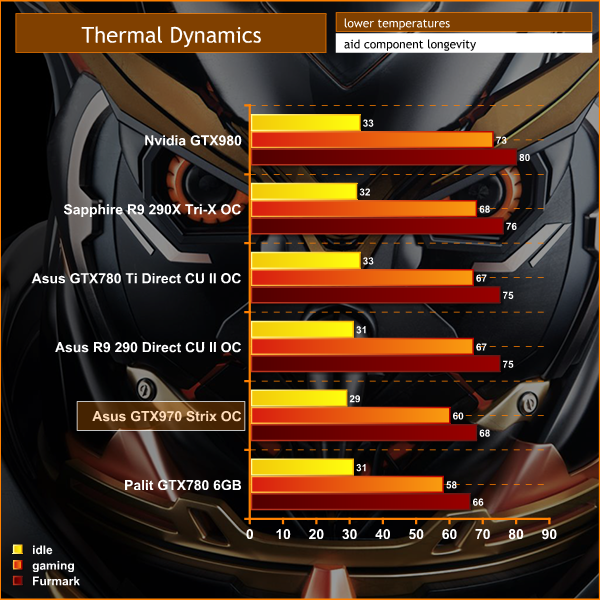
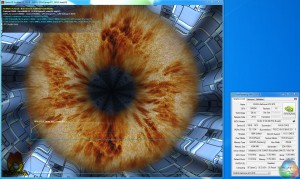
The Strix cooler fans doesn't spin until around 50-53c – peaking at 60c when gaming. When loaded with the synthetic stress test Furmark, the temperatures rise to 68c.
We have built a system inside a Lian Li chassis with no case fans and have used a fanless cooler on our CPU. The motherboard is also passively cooled. This gives us a build with almost completely passive cooling and it means we can measure noise of just the graphics card inside the system when we run looped 3dMark tests.
We measure from a distance of around 1 meter from the closed chassis and 4 foot from the ground to mirror a real world situation. Ambient noise in the room measures close to the limits of our sound meter at 28dBa.
Why do this? Well this means we can eliminate secondary noise pollution in the test room and concentrate on only the video card. It also brings us slightly closer to industry standards, such as DIN 45635.
KitGuru noise guide
10dBA – Normal Breathing/Rustling Leaves
20-25dBA – Whisper
30dBA – High Quality Computer fan
40dBA – A Bubbling Brook, or a Refrigerator
50dBA – Normal Conversation
60dBA – Laughter
70dBA – Vacuum Cleaner or Hairdryer
80dBA – City Traffic or a Garbage Disposal
90dBA – Motorcycle or Lawnmower
100dBA – MP3 player at maximum output
110dBA – Orchestra
120dBA – Front row rock concert/Jet Engine
130dBA – Threshold of Pain
140dBA – Military Jet takeoff/Gunshot (close range)
160dBA – Instant Perforation of eardrum
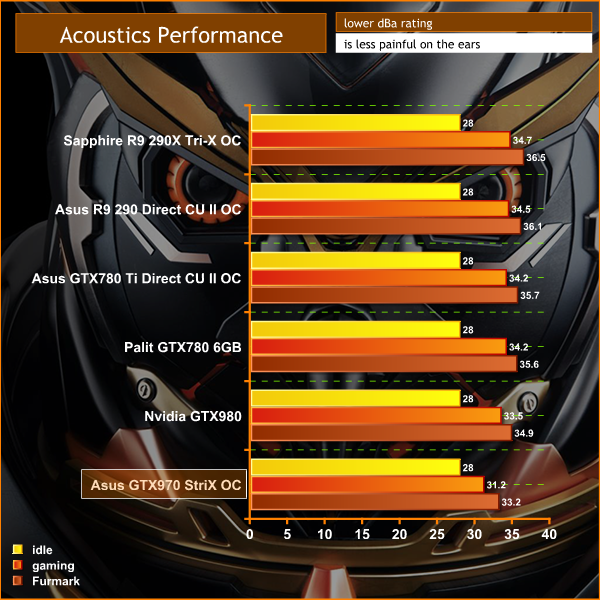
The Asus Strix cooler is very quiet, barely audible, even when tasked with Furmark. When gaming, a single chassis fan is likely to drown out the slow spinning fans. The Maxwell architecture pays dividends when it comes to cooling demands.
To test power consumption today we are using a Keithley Integra unit and we measure power consumption from the VGA card inputs, not the system wide drain. We measure results while gaming in Tomb Raider at 4k resolution and the synthetic stress test Furmark – recording both results.
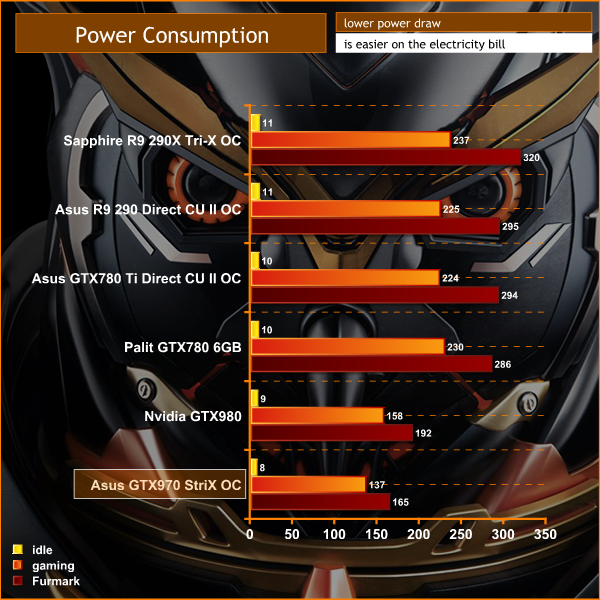
The Maxwell architecture is extremely power efficient – seen before with the excellent GTX750 ti, which took all the power it needed from the PCI e slot.
The Asus GTX970 Strix OC demands just under 140 watts when under gaming load – compare this directly to the R9 290, which takes 225 watts under the same situation. AMD really are so far behind Nvidia when it comes to the architecture efficiency.
To overclock today we are using the latest V4.0.0 of MSI's Afterburner based on the excellent Rivatuner.
There was plenty of overclocking headroom on the MSI GTX970 Gaming 4G – hitting a peak of 1,279mhz (1,418mhz boost) – core voltage and power limit settings were increased to get this result stable.
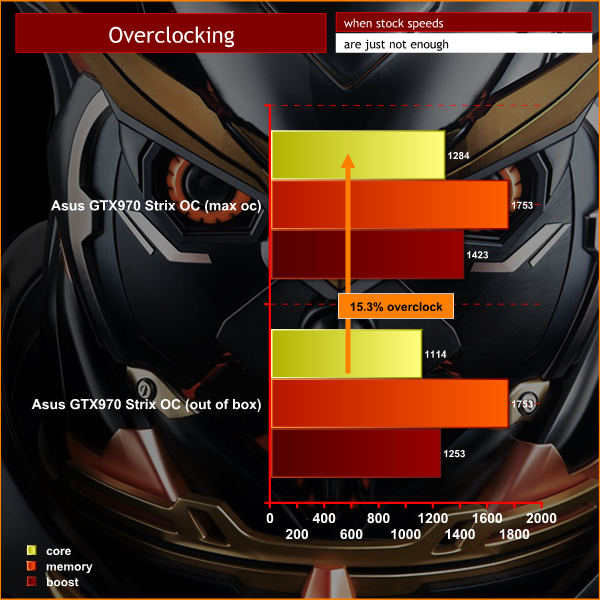
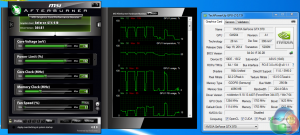
Plenty of overclocking headroom on the Asus GTX970 Strix OC card – we pushed the speed to 1,284mhz, and turbo boost to 1,423mhz.
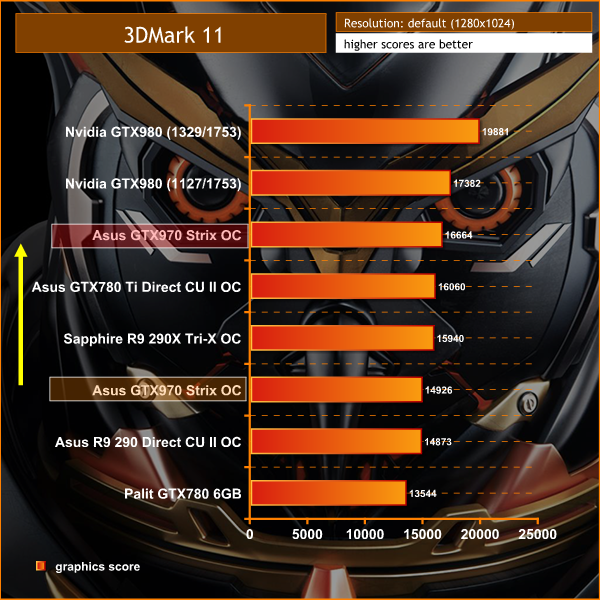
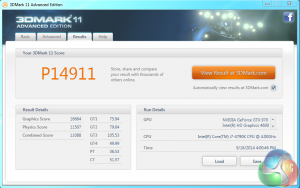
When overclocked, the ASUS GTX970 Strix OC will not only outperform the Sapphire R9 290X Tri-X OC, but it scores higher in 3dmark11 than the Asus GTX780 Ti Direct CU II OC!
In our final review for the Nvidia launch today – we have analysed the new ASUS GTX970 Strix OC. We have reviewed a handful of ASUS Strix solutions already and have been impressed with their ‘hybrid' configuration which disables the fans when a specific core temperature is achieved.
On a hot running AMD card, this hybrid fan solution wouldn't be so effective but when paired up with the new Nvidia Maxwell architecture the results are extremely beneficial in the real world.
Our analysis of the Asus Strix GTX750 Ti OC last week was a key indicator of what is possible. The low priced solution has enough grunt to power the latest Direct X 11 games at 1080p but thanks to the cool running GM107 core, the fans barely activated at all, even when gaming.
The Asus Strix cooler pairs up well on the technically more advanced GM204 Maxwell core incorporated into the GTX970, although the fans do spin when the solution is powering a game. Fortunately they do spin slowly and noise levels are never a concern – in fact this is one of the quietest high performance graphics card we have ever tested.
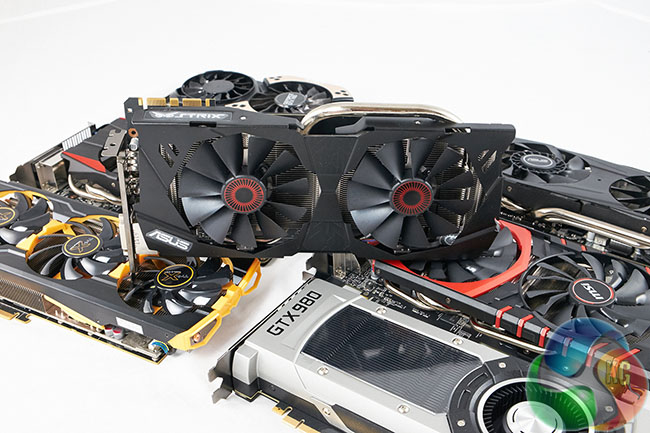
As with all Maxwell oriented cards we have analysed to date, there is plenty of overclocking headroom available with the Asus GTX970 Strix OC. We managed to push the boost speeds past 1,400mhz generating performance past the level of an overclocked Sapphire R9 290X Tri-X OC. At these speeds even the Asus GTX780Ti Direct CU II OC was outperformed.
Nvidia are launching the reference GTX970 in the United Kingdom for only £259.99 inc vat, a price point that surprised us greatly, especially when factoring in the fantastic performance, low power demand and cool operation. This Asus GTX970 Strix OC model is a little more expensive, hitting retail at £299.99 inc vat. Considering the extremely low noise levels and huge overclocking headroom, it earns our highest award today.
Discuss on our Facebook page, over HERE.
Pros:
- 4GB of GDDR5 memory.
- tons of overclocking potential.
- almost silent even when gaming.
- requires only a single 8 pin power connector.
- outperforms an AMD R9 290X when overclocked.
- runs cool under load.
Cons:
- core clock could be higher out of the box without compromising stability.
Kitguru says: The Asus GTX970 Strix OC is extremely quiet and cool running. Loads of overclocking headroom to deliver AMD R9 290X beating frame rates.

 KitGuru KitGuru.net – Tech News | Hardware News | Hardware Reviews | IOS | Mobile | Gaming | Graphics Cards
KitGuru KitGuru.net – Tech News | Hardware News | Hardware Reviews | IOS | Mobile | Gaming | Graphics Cards


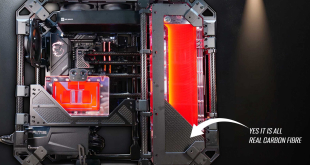
Have been in the market for a R9 280x for the past several months…
After reading this review, whelp, I’m sold; Asus 970 Strix it is.
Dude no go for the MSI 4G it performs better and is £20 cheaper in the UK been doing a ton of research this morning. Also be have managed overclocks of 1502 ON THE BASE CLOCK. Without much effort. 1400 WITHOUT ADJUSTING VOLTAGES o_o
The MSI is 2fps faster, sorry but i’d rather have a better cooler who stays silent until the card reaches 60° and oc it myself if i need to. Even a 50mhz boost, which is nothing, is more than enough to get more than those 2fps. MSI solutions remains fantastic though, you can’t really go wrong with both of them.
True but the MSI one also stays incredibly cool, some reviewers go tit to 1567 with no voltage increase and does not go above 65c. That is damn impressive. The MSI cooler is also really well designed to be fair.
MSI disable fans under 50C as well…
http://www.kitguru.net/components/graphic-cards/zardon/msi-gtx-970-gaming-4g-review/22/
Link?
http://www.scan.co.uk/products/4gb-msi-gtx-970-gaming-twin-frozr-5-pcie-30-%28×16%29-7010-mhz-gddr5-gpu-1140-mhz-cores-1664-dp-dvi-hdmi
I actually got mine £5 cheaper from them, they just upped their price.
Hello people Kitguru, you have an error in the selection list, says MSI GTX 970 Gaming 4G
instead of ASUS Strix GTX 970. Please fix that, thanks!
Thanks!
Hey Kitguru, I am wondering what your opinion on the different partner cooling solutions is. TwinFrozr (MSI), Windforce (Gigabyte), ACX (eVGA), and Strix (?, ASUS) – all seem to be formidable choices. I am personally a fan of the Gigabyte Windforce one, but what about the other selections? How do they compare?
So just to be sure, I should definitely look into MSI cards if I want to build a silent system right?
Not really ASUS are also silent, but this MSI card is insanely silent I am amazed and it is cheaper. to it with a bit of an OC max temp of 70 and it is silent. Nothign wrong with ASUS. I like them a lot but MSI are also solid, and this is £20 cheaper so no brainer for me.
Gotcha. What if I wanted to buy a relatively silent gpu in the $150-200 range? Would you recommend ASUS and MSI for their silence (even at the price range)?
Hard one would need to do your research on that front. Thing is the 900 Series seems to be the quietest of them all due to the lower power consumptions fans turning off below 60c etc. Silence in that range may not be achievable. Would have to look back at the 700 series to try and find a quiet solution.
I wonder If this type of system fan doesnt die through the years, all those constant changes from 0 to X rpms makes me wonder, thats my only concern about this card. Even if MSI is faster and more silent I wouldnt go with them. Asus has better quality components all the way. Comes to my mind the cheap ass mosfets that MSI use in their 970 Gaming mobos, so NO MSI. This is a must have as Kit Guru says. Bad thing is al re-sellers here in Latín America are gonna raise the price of this model for a while. Greedy basterds…